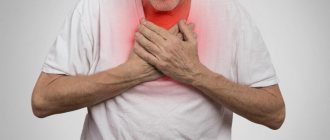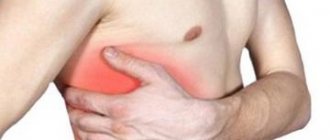Urethritis is an inflammation of the urethra , a very common urological disease. As a rule, urethritis in men is more severe than urethritis in women. The cause of urethritis is most often the presence of a sexually transmitted infection in one of the partners.
1
Diagnosis of urethritis in women
2 Diagnosis of urethritis in men
3 Diagnosis of urethritis
Symptoms of urethritis
The insidiousness of the disease lies in the fact that the usual general inflammatory manifestations (fever, weakness, malaise) are most often not observed with urethritis. The disease urethritis can generally occur without pronounced symptoms. In this case, one of the partners may suffer the disease much more severely. Urethritis can make itself felt even after a considerable time after infection - from several hours to several months with nonspecific infectious urethritis.
The main symptoms of urethritis may be as follows:
- pain and burning when urinating (in women they are localized mainly at the end of the urethra (outside), in men - along the entire length of the urethra);
- copious mucopurulent discharge from the urethra (mainly in the morning) with a sharp, specific odor;
- frequent urge (with an interval of 15-20 minutes) to urinate;
- incomplete emptying of the bladder;
- urinary disorders;
- cloudy urine, drops of blood may appear in it at the end of urination;
- change in the external opening of the urethra in color and shape;
- irritation of the glans penis and foreskin in men;
- pain during erection in men;
- high content of leukocytes in a general urine test.
What are the dangers of untreated urethritis? If left untreated, acute urethritis can develop into a chronic form, which is characterized by regular exacerbations and requires longer and more complex treatment. Male urethritis also threatens chronic prostatitis, vesiculitis, epididymitis, as well as the development of infertility in the future.
Pain after urination in men
In men, pain after urination may occur due to:
- Prostatitis is inflammation of the prostate gland. This disease begins after bacteria enter the prostate from the urethra. Prostatitis appears against a background of weakened immunity, stress, and concomitant diseases of the genitourinary system. Symptoms: pain after urination, abdominal pain, pain during ejaculation, difficulty urinating, pain in the testicles;
- Phimosis is a disease during which the foreskin narrows. This disease is provoked by infection, injury, and failure to comply with personal hygiene rules. Symptoms: pain after urination, difficulty urinating, pain during ejaculation.
Types of urethritis
Depending on the degree of intensity of the process and the duration of the disease, acute urethritis and chronic urethritis .
Acute urethritis is characterized by a bright onset and severity of all symptoms, the duration of the disease is up to 2 months.
Chronic urethritis (a disease lasting more than 2 months) is characterized by a prolonged course, mild symptoms and the development of complications.
Based on the nature of occurrence, the following types of urethritis are distinguished:
- primary (after sexual intercourse or medical manipulations in the groin area) and secondary urethritis (the appearance of infection from other organs of the genitourinary system);
- allergic urethritis (allergy to medications, shampoos, soap, condoms);
- chemical urethritis (reaction to drugs entering the urethra);
- mechanical urethritis (occurs due to mechanical damage to the urethra);
- infectious urethritis (caused by specific pathogens, such as chlamydia, mycoplasma, ureaplasma, gardnerella, gonococcus, and nonspecific pathogens (streptococcus, staphylococcus, E. coli);
- non-infectious urethritis , occurs due to injuries to the urethra (due to the passage of a stone during urolithiasis, when using a bladder catheter), as well as due to narrowing of the urethra and congestion in the pelvis;
- nonspecific urethritis - purulent inflammation that is caused by streptococci, staphylococci and E. coli;
- specific infectious urethritis - appears as a result of a sexually transmitted infection.
According to pathological signs, the following types of urethritis can be distinguished:
- gonorrheal urethritis (the causative agent of the disease is gonococcus, infection through sexual intercourse with an infected person, through underwear, general hygiene and personal items - washcloths, towels, etc.);
- bacterial urethritis (the causative agent is a nonspecific bacterial flora, the disease can appear as a result of endoscopic manipulations, long-term use of a catheter);
- trichomonas urethritis (characterized by the presence of foamy, whitish discharge, itching, which, if untreated, quickly becomes chronic and becomes trichomonas prostatitis);
- candidal urethritis (the causative agent is a yeast fungus that affects the mucous surface of the urethra, appears after long-term use of antibacterial drugs, less often after contact with an infected partner);
- chlamydial urethritis (viral urethritis, affects the urethra, conjunctiva, vagina and cervix).
1 Diagnosis of urethritis in men
2 Diagnosis of urethritis in women
3 Diagnosis of urethritis
Why does the urethra hurt?
When does the urethra hurt in women?
Any woman can have a disease such as urethritis.
Features of the anatomy of the female perineum, in particular, the proximity of the external opening of the urethra to the vagina and anus determines the frequency of transient urinary tract infections. As well as chronic urethritis against the background of immune system failure, pregnancy, nonspecific bacterial or viral infection, sexually transmitted infections. A relatively short and wide urethra determines a fairly rapid transition of the infectious process to the bladder and the onset of cystitis.
Having a condition such as urethritis can cause severe discomfort.
Factors that contribute to the formation of urethritis:
- Poor nutrition;
- Exposure to low temperatures;
- Diseases associated with the reproductive system;
- Urolithiasis disease;
- Decreased immunity level;
- Promiscuous sex life.
If we consider each of these factors in detail, we can find out that eating spicy and overly salty foods provokes urethritis.
When excreted, salts irritate the urethra.
When performing a smear from the urinary tract, the doctor may injure the wall of the urethra.
Worth remembering! If you experience any abnormalities, presence of discharge, or painful sensations during urination, be sure to contact the clinic.
For further examination and treatment, you can go to a private or public clinic.
When does the urethra hurt in men?
The significant length of the male urethra and its connection with the reproductive system makes this part of the body most vulnerable to sexually transmitted infections.
Often, specific urethritis occurs in men in a chronic form and leads to orchitis and prostatitis.
When the urethra hurts after sex
If painful urination appears, the color of the urine changes, or an admixture of pus or blood appears in it, a man should immediately contact a urologist. In no case relying on the spontaneous successful completion of inflammation.
Important! If you experience pain in the urethra, burning sensation and pain when urinating, you should consult a urologist.
Necessary diagnostic methods for pain in the urethra
The presence of urethritis or another disease can only be detected by a urologist. It is important to make the correct diagnosis and prescribe the correct treatment.
Doctors usually order the following tests:
- Microscopic studies;
- Bacteriological;
- PCR diagnostics;
- Ultrasound;
- General urine analysis.
If the presence of infection has not been established, tests are carried out for the presence of allergies and the level of immune cells is checked.
Using a microscope and inoculation on a special nutrient medium, the presence of the causative agent of urethritis is determined.
To undergo the necessary examination, you can contact our private clinic.
Our specialists work with an individual approach to each patient.
What treatment should be given for pain in the urethra?
To treat urethritis, complex therapy is necessary.
Restore the mucous membrane of the urinary canal.
In women, normal vaginal flora is restored.
They restore immunity.
Pain in the urethra: complications of urethritis
There are quite a few complications of urethritis.
One of them is the transition of inflammation to the chronic stage
The spread of the disease to other organs causes more serious pathologies (cystitis, pyelonephritis).
At an advanced stage of chronic urethritis, deformation of the urinary canal appears.
How to prevent pain in the urethra?
The main principle of disease prevention is to reduce the impact on the body of factors that contribute to the onset of the disease.
The main methods for preventing the development of the disease are:
- Regular genital hygiene;
- After sex, you need to empty your bladder;
- Use contraception;
- Once every six months you should undergo a preventive examination;
- Increasing the level of the immune system;
- Follow the diet;
- Stop drinking alcoholic beverages.
Nowadays, it is impossible to exclude all possible factors affecting health.
Therefore, you should monitor your health to avoid complications.
Timely prevention of the disease is better than further long-term treatment.
For any pain in the urethra, contact the author of this article - a urologist, venereologist in Moscow with 15 years of experience.
Features of urethritis in men and women
Men (due to their anatomical structure - a longer and narrower urethra) feel the manifestations of urethritis earlier and more acutely, while a woman may not notice its symptoms at all. Men may experience redness and sticking of the sponges of the external opening of the urethra in the morning.
Urethritis in men
The cause of urethritis in representatives of the stronger sex can be the following factors:
- infection through sexual intercourse;
- hypothermia of the body;
- presence of stress;
- unbalanced diet with a lot of spicy, sour, salty foods;
- inflammatory process in the body;
- the presence of urolithiasis.
Chronic urethritis in men occurs rarely when the following conditions occur:
- untreated acute urethritis;
- expansion of the inflammatory process to the entire urethra and prostate gland;
- weakening of the immune system.
Urethritis in women
Compared to urethritis in the stronger sex, female urethritis appears as a result of various infections. If the disease is not treated, then due to the female anatomical structure, urethritis can quickly develop into cystitis.
Various infections play a major role in the disease of urethritis in women. Among the infectious types of urethritis in women, the most common is gonorrheal. Within 12 hours of infection, a woman may experience symptoms of acute urethritis. If left untreated, after 20 days the disease becomes chronic.
Quite often, women become infected with the following types of urethritis: chlamydial , trichomonas or candidiasis .
Candidal urethritis in women can occur with long-term use of antibacterial agents.
Typically, the first signs of the disease occur at the beginning of menstruation, the cessation of contraceptives, or the onset of menopause.
Treatment
Conservative therapy
The list of therapeutic measures depends on the cause of pain when urinating. Antimicrobial drugs play a major role in the treatment of infectious and inflammatory processes. For nonspecific infections, drugs from the group of cephalosporins, nitrofurans, fluoroquinolones or macrolides are used. For STDs, antimicrobial, antiprotozoal and antifungal medications are used, selected taking into account the sensitivity of the pathogen.
Depending on the nature of the disease, men are additionally prescribed immunocorrectors, intravesical instillations, medicinal microenemas, and various methods of physical treatment. Patients with traumatic injuries and foreign objects may require analgesics, NSAIDs, tranquilizers, sedatives and hemostatic agents. For injuries, catheterization is performed. For cancer, radiation therapy and chemotherapy are used.
Surgery
Men with pain when urinating undergo the following surgical interventions:
- Foreign objects and trauma:
primary urethral suture, delayed urethral repair, transurethral or surgical removal of a foreign body. - Urolithiasis:
contact and distance cystolithotripsy, ureterolithotripsy and nephrolithotripsy, nephrolithotomy, pyelolithotomy, ureterolithotomy, cystolithotomy. - Sclerosis and prostate cancer:
transurethral resection, radical prostatectomy, prostate brachytherapy, bilateral orchiectomy for hormone-dependent tumors.
Diagnosis and treatment of urethritis
Treatment of urethritis requires careful diagnosis; you need to undergo special tests for urethritis. First of all, this is the collection and culture of secretions from the urethra (if they are absent, an analysis of the first portion of urine is collected). Laboratory diagnostics makes it possible to determine the causative agent of urethritis and its sensitivity to various groups of antibiotics. This allows you to make a correct diagnosis and prescribe adequate therapy.
1 Urethroscopy in MedicCity
2 Pentax FUR-9RBS ureterorenofibroscope
3 Pentax FUR-9RBS ureterorenofibroscope
An important diagnostic method is urethroscopy.
In addition, additional studies (ultrasound, MRI) may be required to exclude an inflammatory process in other organs (in women - in the bladder, in men - in the prostate gland and seminal vesicles).
Diagnostics
A urologist-andrologist is involved in establishing the cause of pain. During the conversation, the doctor asks the man when the symptom appeared and what manifestations it was associated with. The specialist studies the dynamics of the development of the disease and identifies possible provoking factors. Then he conducts an external examination, paying attention to the condition of the meatus, prepuce and head, the presence of edema, hyperemia and other changes in the genital organs. By palpation, the urologist detects tumor-like formations and regional lymphadenitis. Additional examination includes the following procedures:
- Digital examination of the prostate.
The doctor palpates the prostate gland through the rectum. The technique allows you to evaluate the shape, size and homogeneity of the structure of the organ. Used to diagnose space-occupying lesions. Makes it possible to suspect inflammation based on pain on palpation and an increase in the size of the gland. - Ultrasonography.
Ultrasound of the urethra is a safe, non-invasive basic examination used to assess the condition of the urethra and detect injuries, stones and foreign objects. Ultrasound of the bladder is informative for cystitis and cystolithiasis. An ultrasound of the kidneys shows all types of stones, hydronephrosis due to stone blockage and other changes. For prostate diseases, ultrasound of the prostate gland is indicated. - Radiation diagnostics.
Retrograde urethrography is considered the most accurate way to diagnose urethral injuries. To increase information content, it is supplemented with excretory urography. X-ray positive stones are clearly visible on survey photographs. To identify soft uric acid and protein stones, excretory urography or computed tomography is prescribed. - Endoscopic methods.
When performing urethroscopy, the position of the foreign body or calculus, the condition of the surrounding tissues are determined, and, if possible, removal is carried out. To confirm blockade of the kidney or ureter in renal colic, chromocystoscopy is performed. In case of chronic cystitis outside of exacerbation, cystoscopy is sometimes performed. During endoscopic examinations, according to indications, material is taken for morphological analysis. - Other techniques.
In cases of urethral obstruction, urodynamic studies are indicative. Men with suspected prostate cancer are prescribed an extensive examination, including transrectal or saturation biopsy, MRI of the prostate gland, radiography of the chest, scintigraphy of skeletal bones. - Lab tests.
Confirmation of STIs is carried out by microscopy, microbiological examination, RIF, ELISA or PCR. With nonspecific inflammatory lesions of the urinary tract, bacteria, leukocytes, and red blood cells are found in the urine. In men suffering from prostate diseases, PSA levels are determined. Biopsies are studied during cytological or histological analysis.
Bacterial urethritis - treatment
The treatment strategy for the disease is determined based on several factors. The symptoms, the nature of the pathology (acute or chronic), and the type of pathogen are taken into account. The conservative program includes the prescription of antibiotics in combination with silver nitrate or Collargol. The drugs are used for installations in the urethral canal. Rinsing helps in destroying pathogenic microorganisms. Used for nonspecific type of disease
Antibiotics for the treatment of bacterial urethritis in women and men are chosen to be broad-spectrum. Such drugs differ in that the pathogen cannot show resistance to them:
- group of macrolides;
- cephalosporin drugs;
- tetracycline;
- fluoroquinolones;
- group of sulfonamides.
The course of antibacterial therapy is 7–10 days. It is recommended to take a probiotic at the same time so as not to disturb the intestinal microflora.
Also based on symptoms, treatment for bacterial urethritis in women and men includes:
- NSAIDs;
- painkillers;
- vitamin complexes.
Physiotherapy will help consolidate the results of treatment and speed up the recovery of the body.
Methods for diagnosing urethritis
Treatment of urethritis begins with diagnosis: it is necessary to determine which infection caused the inflammation. The pathogen is determined by laboratory diagnostic methods. A smear from the urethra is used as biological material. The following methods can be used:
Microscopic examination
The sample taken is examined under a microscope. The presence of epithelial cells, leukocyte cells (their presence in significant numbers indicates the presence of inflammation), mucus and microorganisms is assessed.
Cultural examination
The taken biological material is placed in a nutrient medium. If pathogenic microorganisms are present in the sample, they will begin to multiply. The method allows for qualitative and quantitative diagnostics (i.e., to establish the presence of a pathogen and determine how active its role is in the pathological picture).
PCR diagnostics
Diagnostics using the PCR method makes it possible to detect the pathogen even in cases where its presence is minimal. More information about the diagnostic method
Sign up for diagnostics To accurately diagnose the disease, make an appointment with specialists from the Family Doctor network.
Pain after urination in women
Causes of pain after urination in women:
- Cystitis is an inflammatory disease of the bladder. The disease most often occurs against the background of a weakened immune system, stress, constant hypothermia, or the presence of an infectious disease of the genitourinary system. Symptoms: pain after urination, pain in the lower abdomen, frequent incomplete urination;
- Candidiasis is a fungal disease that causes itching and irritation of the external genitalia. White cheesy discharge appears. Symptoms: pain after urination, vaginal discharge, itching, burning, pain during sexual intercourse.
Treatment of pain when urinating
The doctor selects therapy after determining why the pain symptom occurred. For treatment the following is prescribed:
- Antibiotics. The drugs suppress inflammation and reduce unpleasant symptoms;
- Immunomodulators. Appointed at the discretion of the doctor. Immunotherapy helps to provide faster relief for patients with poor health;
- Antiseptic and diuretic drugs. Most often, products of plant origin are selected.
For urolithiasis, treatment tactics depend on the size of the stones. Small crystals are crushed with special medicines, large ones must be cut out.
Tumors and polyps also require surgery. Most operations are performed using minimally invasive methods, which allow the patient to be cured and the risk of postoperative complications to be reduced.











